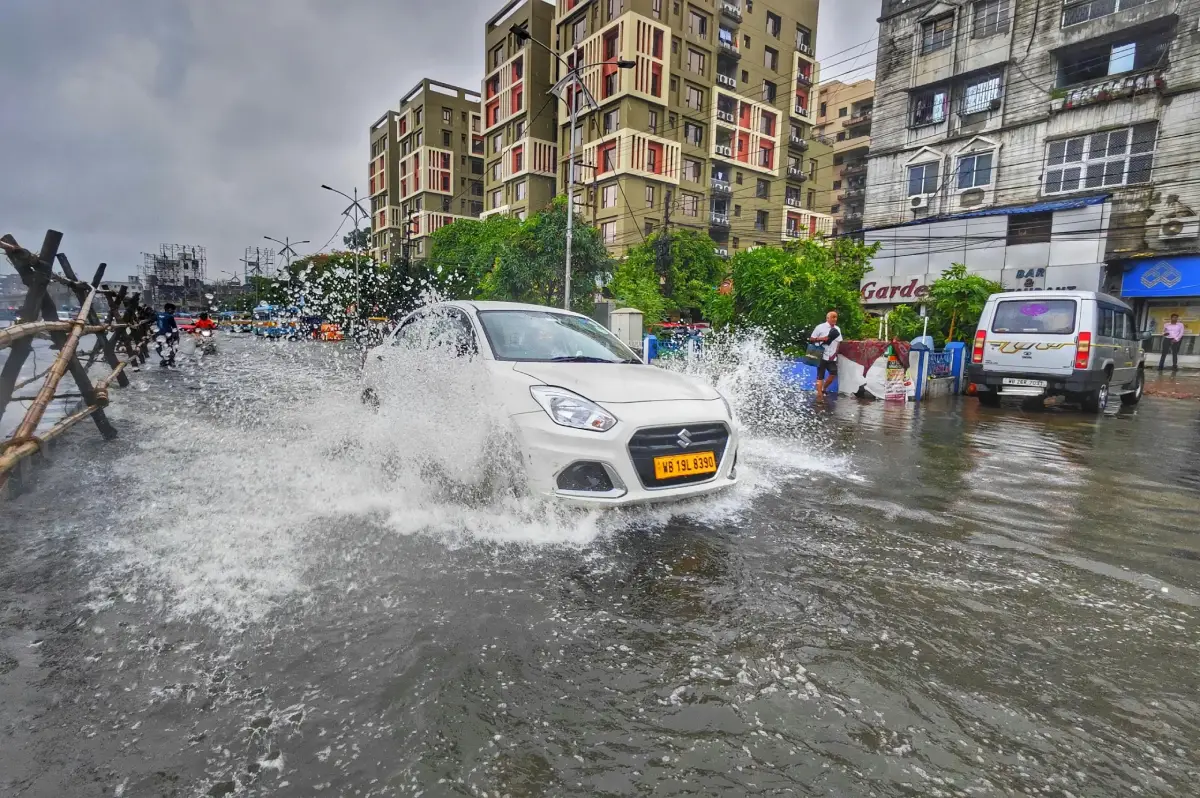India’s Intensifying Monsoon and What IMD Warnings Reveal About Climate Change

India is presently experiencing the peak of its monsoon season, with substantial rainfall affecting vast stretches of the country. States including Himachal Pradesh, Uttarakhand, Madhya Pradesh, and Chhattisgarh have been particularly impacted by these heavy showers. The India Meteorological Department (IMD), in a bulletin released on July 10, 2025, has forecast continued intense precipitation across northwestern and central regions for the coming days, disrupting daily routines, agriculture, and public infrastructure.
Within just one day, rainfall ranging from 7 to 20 centimetres was measured in places such as Jammu & Kashmir, Himachal Pradesh, eastern Rajasthan, Chhattisgarh, and parts of Uttar Pradesh. Specific locations like Madawara in Uttar Pradesh, Nasirabad in Rajasthan, and Kathua in Jammu & Kashmir witnessed daily totals exceeding 15 centimetres. In Delhi, the rain resulted in a sharp drop in temperaturesby nearly 6 to 8 degrees Celsius bringing temporary relief from the heat but simultaneously causing widespread flooding and severe traffic congestion.
Weather systems such as a low-pressure zone over Jharkhand and cyclonic disturbances over Punjab and Assam have kept the monsoon trough firmly established across the northern plains. The IMD predicts this active monsoon period to persist in north, central, and northeastern India through at least mid-July.
Although such heavy monsoon episodes are not unprecedented, recent patterns indicate an uptick in both their frequency and unpredictability. A report published by the Council on Energy, Environment and Water (CEEW) in 2024 found a 55 percent rise in rainfall occurrences in last 10 years. As per an answer by the Government in Lok Sabha, while the aggregate volume of rainfall might stay consistent, its distribution and intensity are expected to change dramatically in the years to come.
Practically speaking, this points to longer dry periods interrupted by intense downpours, which can cause both water shortages and flash floods. The internal fluctuations of the monsoon are growing, complicating agricultural planning and placing urban infrastructure under increasing stress.
In farming, these changes have immediate consequences. The IMD’s latest guidance advises farmers in Madhya Pradesh, Jharkhand, Chhattisgarh, and Uttarakhand to either delay sowing or ensure adequate drainage in rice, maize, and vegetable plots to avoid crop losses. These kinds of recommendations have become a recurring theme in the kharif planting season, showing that even timely rainfall can still prove damaging under erratic conditions.
Cities are no less affected. An ORF report that assessed climate vulnerability in urban areas identified that more and more cities are facing high flood risk every year. Encroachment on natural water bodies, inefficient drainage systems, and unplanned urban sprawl have left cities such as Mumbai, Delhi, and Patna increasingly exposed. Persistent rain over already saturated land has prompted the IMD to issue flood warnings in parts of Odisha, Jharkhand, and Chhattisgarh.
These developments must also be seen in the broader context of global climate change. The Intergovernmental Panel on Climate Change (IPCC), in its Sixth Assessment Report, has drawn attention to the warming of the Indian Ocean, which plays a central role in intensifying monsoon behaviour. As sea temperatures rise, more water evaporates into the atmosphere, setting the stage for heavier rainfall. Simultaneously, land use changes like deforestation and urban expansion are reshaping local climate patterns and amplifying associated risks.
While India’s ability to forecast weather has advanced now offering five-day outlooks at the district level and delivering timely mobile alerts, preparation must now extend well beyond early warnings. There is an urgent need for investments in robust infrastructure, wetland preservation, local disaster readiness, and resilient design principles.
In agriculture, adopting climate-resilient strategies is becoming critical. This includes growing crop varieties that can withstand both drought and floods, utilizing real-time weather data for farm decisions, and building small-scale water storage systems. Urban regions, too, need to implement comprehensive flood management plans that incorporate proper zoning, stormwater reuse systems, and durable drainage and road networks.
The recent weather updates are more than short-term warnings. They reflect a deeper transformation underway. The steady rains of past decades are increasingly being replaced by abrupt, powerful cloudbursts. A pattern is emerging—scorching heatwaves at the start of summer now routinely give way to sudden deluges in July.
India may not have control over how the monsoon evolves, but it can—and must—prepare for the new reality it brings.
